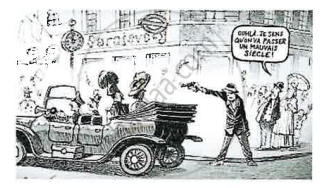Advertisements
Advertisements
प्रश्न
What is meant by Pan-Slav Movement? Why did it add to conflict between Austria and Russia?
उत्तर
Pan-Slav Movement was a movement which was started by the Balkan States against the Ottoman Empire towards the end of the 19th century and the beginning of the 20th century.
Turkey was a powerful nation during the 15th and 16th century and she had control over the Balkan States, but the Turkish power began to decline in the 18th and 19th centuries. As a result, Austria, Russia, Bulgaria and Serbia began to increase their influence. It created rivalry and enmity among these nations especially between Russia and Austria.
In order to fish in the troubled waters, Russia encouraged the different Balkan States to raise a standard of revolt against the collapsing Ottoman Empire. The Russian Czars hoped that these Balkan States would come under their control once Turkey was ousted from those states. It was with this aim in view that Russia started the Pan-Slav Movement among the Balkan States. But, many areas of Austria-Hungary., were also inhabited by the Slavs. Thus, this Pan-Slav Movement was as much a danger to Austria-Hungary as it was to the Ottoman Empire. Thus, Russia’s encouragement to the Pan-Slav Movement greatly estranged the relations between Russia and Austria.
When (in 1908) Austria annexed the two provinces of Bosnia and Herzegovina, Russia fanned the fire and consequently some (six) years later in 1914, a Serbian, backed by Russia, killed Aracduke Ferdinand, the Crown Prince of Austria. This very incident precipitated the war. Thus the First World War was the direct result of the Pan-Slav Movement.
APPEARS IN
संबंधित प्रश्न
Name the Single Nation States and the Imperial States before 1914.
When did Japan defeat Russia?
Who was murdered on June 28, 1914 at Sarajevo?
What is the Sarajevo Incident? Who assassinated whom, when and where?
The outbreak of the First World War was preceded by series of incidents. Mention any two of them.
When and why did the U.S.A. enter the First World War?
With reference to the First World War, answer the following question:
Name the two alliances formed in Europe during the First World War.
Name the two alliances formed in Europe before the beginning of the First World War.
|
The final act of the long-drawn-out negotiations took place at Versailles on Saturday afternoon and to-day Germany and the Allies - always with the exception of America - are at peace. Peace is a blessed word and both the word and the fact are welcome to-day. So far as Germany is concerned, there is for the present, an end of strife and at least a formal return to the decent relations of civilised states. Editorial: Peace in force (12 January 1920) The Guardian |
Mention any three causes of the World War which ended with the signing of the treaty being discussed in the passage above.
Look at the picture given and answer the following question:

Mention any three points to analyse how Europe was rearranged as a consequence of the war caused by this incident.
